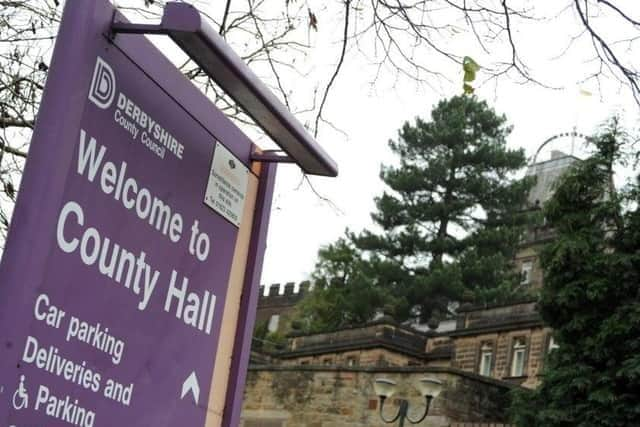Derbyshire County Council buildings review will help cut carbon emissions
and live on Freeview channel 276
Speaking in a meeting of cabinet, deputy leader Councillor Simon Spencer explained how the council’s Asset Management Review, which looks at how its buildings are used and maintained, was an important factor in helping the authority achieve its aim of being carbon neutral by 2032.
He stated: “We have 4,500 assets in Derbyshire, and those 4,500 assets need to be used to their full potential.
Advertisement
Hide AdAdvertisement
Hide Ad“They need to be maintained to the highest standard, and the way in which we are approaching that programme now in understanding those buildings is significant and will form part of our ongoing strategy to deliver the carbon emissions reduction that are required and make sure every room is used to its full potential.”


The future of County Hall, in Matlock, has been debated for a long time, with high maintenance costs for the Grade II listed former Victorian hydro making it difficult to sustain as a modern workspace.
The climate change progress review stated: “The council’s asset review process is identifying buildings for disposal, which will reduce heating demand.
“Retrofit projects to reduce heating demand are being developed for poorly-performing sites, based on a rigorous review process.”
Advertisement
Hide AdAdvertisement
Hide AdA review of council properties was due to be completed at the end of last year, including outline business cases for each office building.
The climate change progress report showed since 2009 the authority has reduced its CO2 emissions by 43 per cent, with actions such as cutting unnecessary travel and switching to electric vehicles and street lighting contributing to the success, but leader Councillor Barry Lewis said this was the ‘tip of the iceberg’ when it came to tackling climate change.
“There’s an awful lot of activity taking place in the background, which will contribute to that in the course of time and these annual reports will help measure that progress,” he said.
“We do want to be a net zero organisation and we want to achieve that by 2032 or sooner and decarbonise the county’s economy by 2050.”
The council wants to influence its supply chains to inspire other organisations throughout the county to be more energy efficient.